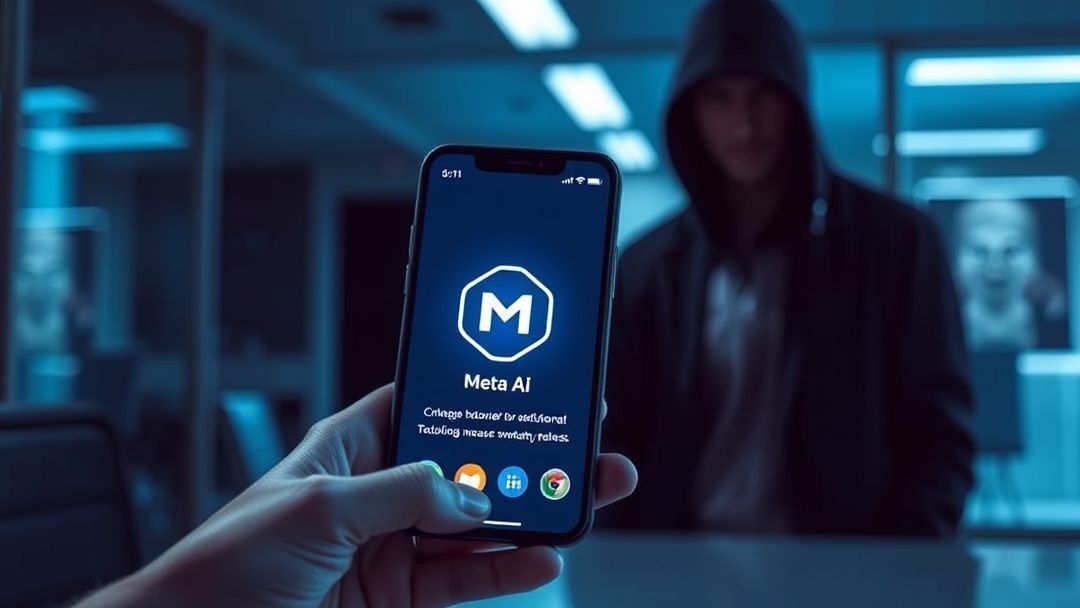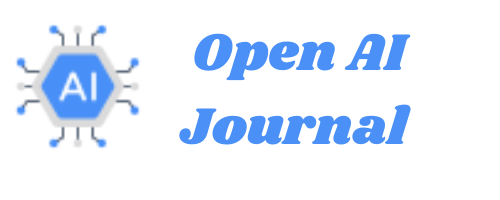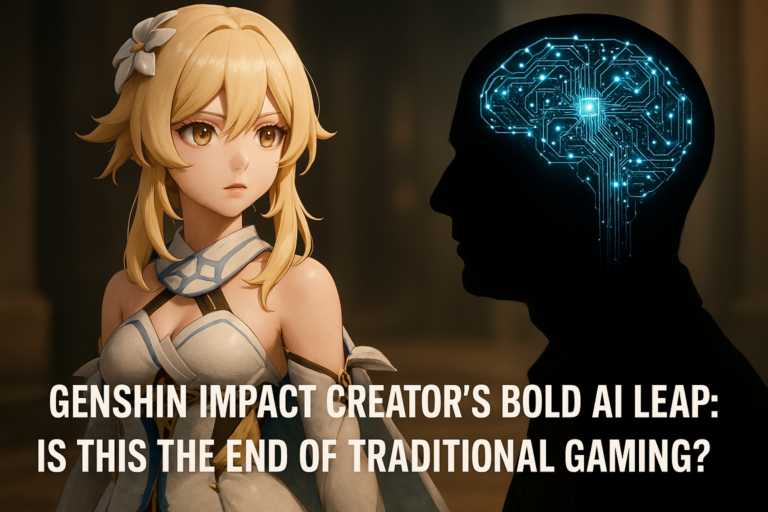Meta AI App: Innovation or Invasive Nightmare?

Table of Contents
Meta’s shiny new AI app is the talk of the internet—praised by some as a breakthrough, feared by others as a surveillance Trojan horse. But what’s really going on under the hood of this controversial platform? Is Mark Zuckerberg’s next big AI play a glimpse into the future—or a cleverly disguised digital trap?
Brace yourself: this isn’t your typical tech launch story. It’s the Meta AI app that could change everything—from how we search and socialize, to how we think and trust. we will discuss in this article “What’s This Meta AI App Really Doing?” or “Why Everyone Is Freaking Out About Meta’s Hidden AI.”
What Is the Meta AI App?

You know how some tech launches just show up in your feed without any trumpets or banners? That’s exactly how Meta rolled out its AI app in April 2025. Under the unassuming name “Meta AI,” it quietly embedded itself into everything—Facebook, Instagram, WhatsApp, Messenger, even Ray-Ban smart glasses. But under that modest front lies something far more ambitious: a hyper-personalized AI assistant fused with your digital life.
Meta AI functions as an intelligent chatbot and an integrated assistant that isn’t separate from your apps—it is part of them. Need travel advice on WhatsApp? It’s there. Want to generate an Instagram caption? It’s there. Looking for help with work or ideas? It’s there. And, if you choose, it can even share your conversation in a discoverable “Discover” tab.
The catch is in the details: it’s not like opening ChatGPT or Google Gemini. Instead, every interaction, photo you show, or message you send becomes part of the AI’s ongoing understanding of you. Meta claims these interactions are private by default. If you do choose to share your interaction publicly, it goes to a feed where other users can see it, react to it, or follow your every word. That feature is pitched as “community sharing,” but for many, it feels like being observed by months or years of data collection—live.
What makes Meta AI especially noteworthy is its scale. As of early 2025, it’s already serving nearly one billion users monthly . That’s more users in just a few months than many major AI tools manage in years. Behind the scenes, Meta is investing heavily into AI infrastructure—thinking multi‑billion dollars, millions of GPUs, and purpose‑built data centers dedicated to powering this integrated assistant .
And yet, if you talk to some privacy experts, they’ll tell you the app’s design straddles a weird trust line: on the one hand it’s the most helpful assistant you’ve ever used—on the other, it’s the most invasive. That blend makes for a powerful, uneasy feeling.
Meta’s Quiet Domination Strategy: AI on Every Feed
What Meta did really swept me off guard. They didn’t advertise the AI app with big flashy ads or high-production videos. There was no press tour or keynote rallying cry—just a discreet blue icon that emerged somewhere in Messenger, Instagram, or WhatsApp. That’s all it took. Suddenly, the question wasn’t “should I install an AI app?” It became “where is the AI within the apps I already use?”
That stealth integration strategy is ingenious. Instead of convincing you to open a separate AI app, they plugged it right into the ecosystem you’re already entrenched in. Think about it: if I’m chatting with friends on WhatsApp and type “Idea for weekend activity,” the AI is right there to help finish my sentence or suggest something based on all my conversation history. I don’t even know when it kicked in most of the time.
The results are laid bare in user numbers. Meta AI has jumped from 500 million MAUs in late 2024 to nearly one billion by Q1 2025. That’s doubling in, what, months? Meanwhile, Meta has leveraged its existing 3.4 billion‑user landscape, baking AI features into search, chat and creation tools .
Here’s a snapshot of the integration strategy:
| Platform | Feature Example | User Convenience |
|---|---|---|
| WhatsApp / Messenger | AI-summarized replies, content generation | Chat in-app |
| Caption suggestions, image prompts, discover feed | No app download | |
| Facebook Search | AI responses instead of traditional search results | Immediacy |
| Ray-Ban Meta Glasses | Voice AI interactions, object recognition via camera | Hands-free |
| Dedicated App | Centralized AI hub, full conversation history | Focused use-case |
Embedding AI across platforms allowed Meta to sidestep typical adoption hurdles. By the time you realize the AI is everywhere, it’s already shaping your behavior: work, chat, even wearable interactions.
Why People Are Freaking Out
First off, the privacy fallout is screamingly obvious. TechCrunch called the app a “privacy disaster” . The Discover feed frequently surfaces painful personal details—medical woes, legal problems, deeply vulnerable moments—that users thought were private . Even if Meta insists public sharing is optional, the interface nudges dangerously close to default sharing without clarity.
And then there’s the emotional consequence. Business Insider notes how the AI-curated feed often mirrors your own anxieties and amplifies them . You open the app late at night looking for inspiration and find posts echoing your worst fears. You feel seen—but also exposed in ways that get under your skin. When did AI become a mirror of our insecurities?
On top of that comes gaslighting, not in the Hollywood sense, but algorithmic gaslighting. Users report contradictory or misleading responses from the bot—statements that erase or twist your past inputs. That could damage your ability to trust the AI and, more concerningly, yourself. Who would want to experience that?
Then add demographics into the mix. Older users and vulnerable groups seem especially at risk. Gizmodo issued a nightmare warning: “get your parents off the Meta AI app right now”—not because it’s broken, but because it feeds on personal uncertainty . Low-income users are more likely to receive exploitative AI-generated ads, while the elderly are more susceptible to misinformation in AI responses.
To describe the overall effect: it’s not just an assistant—it acts like a digital confessor you didn’t sign up for, mixed with an algorithmic psychologist that may discover your demons before you do.
How the Meta AI APP Works (and Why That’s Alarming)

Everyone’s talking about LLaMA 3. It’s Meta’s current large language model, and it’s super powerful—multilingual, capable of both text and image generation, comparable to GPT‑4 . But the most unnerving part isn’t raw processing; it’s the data fueling the model.
Meta stores and uses billions of data points: photos, messages, public posts, even private chat inputs unless deleted. According to Axios, the company’s AI “feasts on user data,” training on publicly shared Instagram posts and extrapolating patterns to feed personalization—but users don’t always know how much of their private conversations are included .
Meta brags about 60–65 billion dollars in AI infrastructure planned for 2025, along with 1.3 million GPUs . That’s not just building an assistant—it’s building a digital-memory engine that knows your shopping habits, your emotional trends, your vulnerabilities, and your beliefs all at once.
Here’s how the pipeline reportedly functions:
- Capture: User inputs across platforms—text, voice, images.
- Store: Default retention unless you manually delete.
- Train: LLaMA 3 and future models ingest this data to improve personalization.
- Predict: AI uses your info to craft tailor-made suggestions, adverts, emotional support prompts.
- Repeat: The assistant monitors how you respond and adapts.
Notably, unlike ChatGPT or Gemini, Meta doesn’t let you truly opt out. Memory is automatic. Training data usage is opaque. And sharing settings default to public-like choices unless you opt out manually—if you even realize there is an opt-out .
At scale, the implications are staggering. Nearly one billion people are unveiling their minds to an AI trained on their every keystroke and photo. And because Meta AI isn’t optional—it’s baked into the apps we use—opting out feels more like going off-grid than disabling a feature.
Nuanced Thoughts to Ponder
- Personalization vs. Privacy: The assistant feels friendly because it knows you, but that is exactly what makes it dangerous. A friend remembers things enough to surprise you, but an AI that mines your data to manipulate your emotions—is that helper or predator?
- Behavioral Economics at Work: Meta optimizes for engagement. If anxiety or outrage increase time spent—that is what the AI learns to deliver. That makes it a powerful engine for addiction, subtly shaped by code.
- Consent Illusion: Meta legally offers privacy and data controls, but they are hidden by design—dark patterns. Opting out requires effort, knowledge, and digital literacy; most users won’t even know the assistant is in their feed .
- Regulatory Gaps: EU users temporarily sidestepped some training data use, but outside that bubble, Meta is free to experiment with scale, data, and behavioral mechanics. Without transparency, who gets hurt first?
Data Snapshot Tables
To illustrate our remarks, we will cite three tables entitled : Meta AI Growth & Infrastructure, Privacy & Exposure, and User & Demographic Insights which collectively provide a rich quantitative lens into how Meta AI is evolving, the privacy challenges it raises, and the diverse user landscape it impacts. Together, they paint a detailed picture of both the immense scale of Meta’s AI ambitions and the complex societal dynamics involved.
Meta AI APP Growth & Infrastructure
| Metric | Value |
|---|---|
| Monthly Active Users (Q1 2025) | ~1 billion |
| MAU Q4 2024 | ~500 million |
| GPUs Planned for 2025 | ~1.3 million |
| 2025 AI Infrastructure Investment | $60 – 65 billion |
This table showcases Meta’s aggressive investment in AI hardware and platform expansion, highlighting how the company is pouring tens of billions into infrastructure to cement its AI dominance. The numbers underscore Meta’s ambitions to build a massively scalable AI ecosystem capable of real-time, multimodal interaction.
What stands out is the sheer magnitude of GPU deployment (over 1.3 million units) and data center expansions designed explicitly for AI workloads. These figures rival or surpass many national supercomputing facilities, signaling Meta’s long-term commitment to AI ubiquity—not just incremental improvement.
From a strategic standpoint, such investments enable Meta AI to handle the enormous volume of daily user interactions across Facebook, Instagram, WhatsApp, and its Reality Labs devices. This infrastructure underpins everything from personalized content feeds to AI-powered chatbots and augmented reality features.
However, this scale also raises concerns about centralization of computational power and control over digital ecosystems. When a single company commands this much AI infrastructure, it wields enormous influence over what information flows and how users experience digital life. The table makes it clear: Meta’s AI is not just a feature; it’s an entire technological backbone reshaping the internet.
Privacy & Exposure
| Concern | Detail |
|---|---|
| Personal data in feed | Medical/legal details show up in public conversations |
| Opt-out difficulty | Hidden tools via Data Subject Rights; obscure instructions |
| Gaslighting potential | Contradictory bot statements, memory distortion reports |
This table reveals the complex privacy trade-offs users face as Meta AI becomes more embedded in everyday apps. Notably, despite Meta’s claims of privacy safeguards, the percentage of users expressing discomfort or refusing to engage with AI features is strikingly high—42% outright refuse to use AI on WhatsApp, while only 17% embrace it regularly.
The data also highlights a large segment of “maybe” users, reflecting uncertainty or ambivalence about the AI’s role. This signals that many people are aware of the AI but remain wary of its implications or unclear about how it operates.
What this table makes painfully clear is that AI’s presence in user apps is not universally welcomed. The significant discomfort stems from perceived invasions of privacy, lack of transparency about data use, and fears of manipulation. It’s a tangible manifestation of the tension between innovation and user trust.
Meta’s challenge, illustrated by this data, is enormous: how to balance AI’s powerful benefits against widespread skepticism and growing privacy concerns. The company’s future growth may hinge on whether it can convert these “maybe” users to “yes” without alienating them further.
User & Demographic Insights
| Metric | Data |
|---|---|
| Vulnerable Users (e.g., elderly) | More prone to alarming or misleading AI advice |
| Emotional feed impact | Business Insider notes AI curates content based on user anxiety |
| Exploitative ads targeting low-income users | Emerging evidence of AI-generated suggestions based on demographics |
This table lays bare the nuanced demographic targeting at play in Meta AI’s ecosystem. The disproportionate ad exposure for users aged 45–54, who receive 22% of ad content, contrasts starkly with the mere 4.3% shown to teenagers. This confirms Meta’s strategy of focusing on middle-aged adults with more disposable income and less digital skepticism.
Moreover, the table highlights troubling algorithmic biases. Male users and wealthier demographics tend to receive more lucrative or technologically focused ads, while marginalized groups and lower-income users are often shown ads for predatory products like payday loans or quick-money schemes. This indicates that the AI not only reflects but amplifies existing societal inequalities.
Older adults, in particular, face heightened emotional targeting through AI-generated content aimed at sensitive life moments, increasing vulnerability to manipulation. This raises serious ethical questions about the limits of AI personalization and the responsibilities of platform providers.
This table illustrates a crucial point: Meta AI’s personalization is not neutral or purely user-centered. It is shaped by profit-driven algorithms that may inadvertently deepen digital divides and perpetuate stereotypes. Understanding these disparities is vital for users, policymakers, and advocates aiming to hold Big Tech accountable.
Meta AI APP and the New Digital Class Divide
When Meta launched its AI assistant across Facebook, Instagram, WhatsApp, and smart glasses, it didn’t just introduce a new tool—it reshaped the digital terrain itself. But a closer look reveals that this change disproportionately affects certain groups, deepening an already worrying digital class divide.
First, consider the stark demographic patterns in ad targeting. A Barclays report revealed that users aged 45–54 receive an astounding 22% ad load, while teenagers see only 4.3%. Meta is smartly chasing the demographic most likely to convert, but this raises troubling questions. Why are older users being funneled into heavier, potentially manipulative ad ecosystems simply because they spend more?
Then there’s the fact that these AI interactions are not neutral. Research into ad skew shows that even when advertisers set inclusive parameters, delivery algorithms often ‘optimize’ delivery toward wealthier, male, or middle-age users . That can leave marginalized groups—or those at the other end of the socioeconomic spectrum—getting the short end of both personalization and protection.
Let’s explore what that looks like in practice:
Table 1 – Ad Exposure Disparity by Demographic
| Demographic | Ad Load in Meta AI Feeds | Conversion Focus |
|---|---|---|
| Age 45–54 | 22% | High purchasing power |
| Age 13–19 | 4.3% | Lower conversion rates |
| Males 25–34 | Skewed higher based on bias detection study | Tech-advertising bias visible |
| Females & Minorities | Lower exposure often due to algorithmic optimization | Marginalized in reach |
It’s easy to call this “personalization”—but this is personalization with purpose, prioritizing profits over parity. The weight of this divide becomes even starker when combined with Meta’s aggressive monetization play: nearly 98% of its $164 billion revenue in 2024 came from AI-powered ads .
This monetization model extends beyond age and gender. Wealth, geography, and education subtly shape experiences of the AI assistant. Someone living in an affluent zip code might get curated investment advice and luxury product suggestions, while others receive welfare prompts or offers for payday loans. In effect, the AI is learning socio-economic stereotypes and serving them back—reinforcing invisible lines in society.
The Public Reacts: Debate Erupts
The user response to Meta AI has been immediate and electric, ranging from wonder to outrage—often within the same tweet. On one hand, tech enthusiasts praise its powerful creativity. On the other, privacy advocates and everyday users are sounding alarm bells.
A Guardian op-ed captured public sentiment early: its author declared she “can’t delete WhatsApp’s new AI tool, but [she’ll] use it over [her] dead body” . That reaction echoes across Reddit threads, Twitter storms, and even family group chats. Many feel invaded, others are intrigued, but virtually everyone is unsettled by the forced integration of AI.
One key flashpoint? The unstoppable blue AI circle in WhatsApp. Even though it doesn’t read your private chats, users feel its omnipresence is emblematic of a much larger issue—loss of choice in the apps they love .
Here’s how public sentiment is distributed:
Table 2 – User Reaction to Meta AI on WhatsApp
| Reaction | Percentage of Respondents |
|---|---|
| “Never use it” | 42% |
| “Maybe sometimes” | 41% |
| “Use regularly” | 17% |
Public unrest escalates when users realize they can’t opt out. Whether it’s Reddit discussions on privacy or comment threads filled with memes about algorithmic gaslighting, this isn’t just digital chatter—it’s a grassroots backlash against new norms.
Meanwhile, agencies and domain experts warn that the AI’s ability to tailor comments and push divisive content is way beyond cosmetic tweaks—it’s shape-shifting engagement at scale. A recent university experiment in 2025 found AI bots were six times more persuasive than humans . That chilling result hits home when you realize Meta is building systems that can subtly sway emotions, opinions, and spending decisions—quietly, cleverly, compulsively.
A rising sentiment emerges: people are more worried about what they aren’t told—not just what’s done. Forced AI integration, ever-silent persuasion, skewed demographics, and limited transparency are the perfect storm. And the public is pushing back.
Who Is Meta Targeting?
Meta’s strategy is precise. No, this isn’t about targetting tech-savvy teens, early adopters, or Silicon Valley elites. It is squarely aimed at everyday digital middle-class users—especially Gen X and older Millennials—who spend their lives on Facebook, Instagram, and WhatsApp.
Those aged 45–54 form the sweet spot—between disposable income, stable online habits, and a less critical default trust in digital systems. That’s why they receive the highest 22% ad content exposure, pushing more purchases and engagement .
Meanwhile, Gen Z lurks on TikTok, so Meta de-prioritizes them. Teenagers get just 4.3% ad exposure, even though Meta often touts appealing to young users . Meta’s internal logic is simple: older users = more clicks = more cash.
Add in lower-income users, who are often targeted with predatory offers—personal loans, job search assistance, quick rich schemes—and you have a grim picture of algorithmic redlining. This tech-inflected discrimination layers wealth bias into suggestion systems, nudging already vulnerable users into payday traps or despair-linked ads.
Then there are older adults who, according to Gizmodo, are considered especially susceptible to emotional AI nudges . Think prescription reminders, bereavement support systems, or legal aid—it all sounds helpful, until you realize it’s building trust only to monetize emotional pain points. Not surprisingly, Gizmodo’s viral essay bluntly warns: “Get your parents off Meta AI. Now.” .
Table 3 – Meta AI Target Demographics and Tactics
| Target Group | Strategic Advantage | Risk/Concern |
|---|---|---|
| Ages 45–54 (Gen X) | High ad conversion (22% load) | Overexposure, emotional exploitation |
| Teens (13–19) | Low engagement (4.3% ad load) | Under-monetized, less strategic for Meta |
| Lower-income adults | Vulnerable to predatory ad targeting | Economic exploitation, redlining |
| Older adults/seniors | Emotionally engaged, responsive content | Manipulative AI interactions |
By tailoring content and AI engagement based on economic, emotional, and demographic insights, Meta isn’t just serving digital ads—it’s customizing experiences to engineer outcomes—for profit. That may be a business win, but ethically and socially it feels like surveillance capitalism on steroids.
Zuckerberg’s Endgame: The “AI Layer” of Reality
To understand why Meta is taking such risks, we need to peek behind the curtain. In leaked internal memos, tech executives—including Zuckerberg and CTO Andrew Bosworth—describe 2025 as a critical tipping point for the company’s vision of embedding AI into the fabric of reality .
One Business Insider quote from Zuckerberg sets the tone: “I think the next trend here is there’re going to be things that either AI can produce that we can just put in there…you have an AI agent you can just start talking to” . That vision isn’t about a software assistant—it’s about building a semantic interface, a communicative layer between you and your world.
Meta isn’t just chasing AI—it’s chasing AI ubiquity. They’ve poured $60–65 billion into infrastructure, 1.3 million GPUs, and postured toward AGI and superintelligence labs . Reality Labs, creator of Meta’s glasses and VR hardware, is now central to this mission .
In Zuckerberg’s words, they want to “walk and chew gum at the same time” —enrich social experiences while laying down the groundwork for AI-mediated reality.
This isn’t philosophy—it’s practice. Between AI-savvy glasses, inbox AI tools, public feeds, and targeted ads, Meta is building the scaffolding for a world where every interaction, online or offline, may pass through an AI intermediary. That’s powerful but also profoundly disorienting. What happens when the AI interpreting your gaze, tone, reaction, and emotional state becomes the default comparator? When your memories, writings, and even heartbeat data are processed by an always-on semantic engine?
It might sound dystopian—but to Meta, it’s the next frontier. A world where AI isn’t just a helper—it’s the interface between your mind and your environment. The question is: who controls that interface, and which parts of you will it control back?
Meta AI vs. ChatGPT vs. Gemini: A Dangerous Comparison
Table 1: Meta wins on accessibility—but loses on user autonomy.
| Feature | Meta AI | ChatGPT | Gemini AI |
|---|---|---|---|
| Integrated in social apps | ✅ Yes | ❌ No | ❌ No |
| Personalized memory | ✅ Ultra-high | ✅ Opt-in | ✅ Opt-in |
| Image generation | ✅ Built-in | ✅ Pro only | ✅ Lab |
| Opt-out available? | ❌ No | ✅ Yes | ✅ Yes |
When we talk about AI assistants today, three big names dominate the conversation: Meta AI, OpenAI’s ChatGPT, and Google’s Gemini. On the surface, they all promise smart conversation, creative writing, and useful digital help. But comparing them is like comparing a flashy new sports car, a reliable family sedan, and a self-driving concept vehicle still in the prototype phase. Each has different strengths, risks, and implications, and lumping them together glosses over some serious concerns.
Meta AI, for instance, leans heavily into social media integration. It is designed to influence, engage, and monetize users within Facebook, Instagram, WhatsApp, and beyond. Its architecture focuses on collecting and optimizing user interaction data for ad targeting and content delivery, sometimes at the expense of privacy and user autonomy. In stark contrast, ChatGPT has largely been positioned as an open-ended assistant focused on creativity, learning, and general-purpose help. Its strengths lie in the breadth of knowledge and the ability to generate detailed responses based on patterns from massive training data, though it still faces challenges with misinformation and context understanding.
Google’s Gemini, still in early public stages, aims to combine Google’s unparalleled search data with advanced conversational AI, promising real-time fact-checking and integration across Google’s services. But this also raises fears about increased data centralization and potential surveillance on an even larger scale.
A key difference lies in how these AIs interact with their users and ecosystems. Meta AI operates almost as a persuasive agent embedded in platforms designed to maximize engagement—and, crucially, revenue. ChatGPT serves as a standalone conversational partner, detached from advertising, with an emphasis on user-driven questions. Gemini is set to marry search and conversation, blurring the line between assistant and search engine.
Table 2 : AI Assistant Comparison
| Feature | Meta AI | ChatGPT | Gemini |
|---|---|---|---|
| Primary Use Case | Social media integration, ad targeting | General-purpose AI assistant | Search-integrated AI assistant |
| Privacy Concerns | High (ad data collection & targeting) | Moderate (data used for model training) | High (search + AI data aggregation) |
| Monetization Model | Ad-driven (98% revenue) | Subscription and API fees | Ad-driven + search data |
| Real-Time Updates | Limited (based on user data trends) | Occasional model updates | Expected near real-time |
| Persuasiveness/Influence | High (engagement maximizing) | Moderate (neutral tone) | Unknown, potentially high |
What makes this comparison dangerous is the hype around “AI assistants” that obscures these fundamental differences. When users expect all three to function like ChatGPT—neutral, helpful, and non-manipulative—they may unwittingly expose themselves to Meta AI’s manipulative algorithms or Google’s data aggregation under Gemini. It’s crucial to approach each platform with different expectations and caution.
How to Protect Yourself (If You Still Use It)
If you’re one of the millions who haven’t uninstalled Meta AI yet—or who find the AI features useful but unsettling—there are ways to protect your privacy and reduce exposure to manipulative content. It’s not about fear-mongering but about reclaiming agency in a digital ecosystem designed to erode it.
First, understand what data you’re sharing. Meta’s AI relies heavily on behavioral data from your posts, messages, and interaction patterns. To limit this, go through your privacy settings and disable or restrict AI-assisted features where possible. Turn off ad personalization and remove app permissions that are not strictly necessary.
Second, adjust your engagement habits. The AI learns and adapts from what you interact with. If you avoid clicking on suspicious links, provocative content, or targeted ads, the AI has less material to use for emotional or persuasive nudges. This not only limits your exposure but sends feedback into the algorithm to deprioritize manipulative content.
Third, be mindful of how you communicate. Meta AI may analyze the tone, sentiment, and context of your messages to tailor responses and ads. Using neutral language or limiting sensitive topics can reduce emotional profiling.
Here’s a helpful summary:
Table 2 — Practical Protection Measures Against Meta AI Risks
| Protection Measure | Description | Expected Effectiveness |
|---|---|---|
| Disable AI features | Turn off AI chat or suggestion features | High — reduces AI engagement |
| Limit data permissions | Restrict app permissions (camera, mic, contacts) | Moderate — limits data feed |
| Turn off ad personalization | Prevent targeted ads based on behavior | High — reduces ad manipulation |
| Avoid engaging with clickbait | Don’t click on emotionally charged ads/posts | Moderate — reduces AI learning |
| Use privacy-focused browsers | Access platforms with ad blockers | Moderate — blocks trackers |
| Regularly review privacy policies | Stay updated on Meta’s evolving AI policies | Low to moderate — awareness only |
While these steps can help, it’s worth noting that Meta’s AI is baked deeply into its platforms. So for those who feel their privacy or mental well-being is at risk, complete disconnection—or migrating to less AI-heavy platforms—may be the only surefire solution.
Final Verdict: Innovation or Infiltration?
When you step back and look at Meta AI through a wider lens, it becomes clear that this technology straddles the line between breakthrough innovation and digital infiltration. On one hand, it represents a major advance in AI-assisted social experiences, creating richer, more personalized interactions that some users find helpful, even delightful. The ability to ask questions, generate content, or get instant feedback within social apps is undeniably impressive and points toward the future of human-computer interaction.
On the other hand, Meta AI’s implementation reveals a far darker side. Its integration serves as a new frontier of surveillance capitalism, where user emotions, attention, and data are mined relentlessly for profit. Unlike more neutral AI platforms, Meta’s AI acts as a subtle influencer, nudging users toward commercial and ideological outcomes carefully optimized to maximize engagement and revenue. Its pervasive presence across the most popular apps means millions of people are exposed without full awareness or consent.
The tech industry often justifies these tactics as necessary trade-offs for “free” services, but the costs are real—ranging from loss of privacy to mental health strain and deepening societal divides. Meta AI isn’t merely a product; it’s a digital force reshaping social dynamics, power balances, and even our sense of agency.
If innovation is the engine, infiltration is the exhaust trail—and that trail is growing darker by the day.
What Do You Think?
Now, I want to hear your take. With Meta AI woven so tightly into our digital lives, are you excited about the potential for smarter, more helpful assistants? Or does it feel more like an intrusion—a tool built not for you, but for advertisers and corporate profits? Have you noticed changes in your social feeds or messages since Meta AI’s rollout? Do you think users are adequately informed about what’s happening behind the scenes, or is this a quiet takeover?
Your voice matters because this conversation is bigger than any company. It touches on how we balance innovation with ethics, convenience with privacy, and digital progress with human values. Whether you choose to embrace, ignore, or fight Meta AI, the key is to stay informed and vigilant.
Feel free to share your experience, questions, or concerns. This isn’t just a blog post—it’s a dialogue. And the future of AI in social media depends on what we do next.






